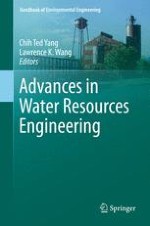2015 | OriginalPaper | Buchkapitel
5. Minimum Energy Dissipation Rate Theory and Its Applications for Water Resources Engineering
verfasst von : Guobin Xu, PhD, Chih Ted Yang, PhD, PE, D.WRE, Lina Zhao
Erschienen in: Advances in Water Resources Engineering
Aktivieren Sie unsere intelligente Suche, um passende Fachinhalte oder Patente zu finden.
Wählen Sie Textabschnitte aus um mit Künstlicher Intelligenz passenden Patente zu finden. powered by
Markieren Sie Textabschnitte, um KI-gestützt weitere passende Inhalte zu finden. powered by
